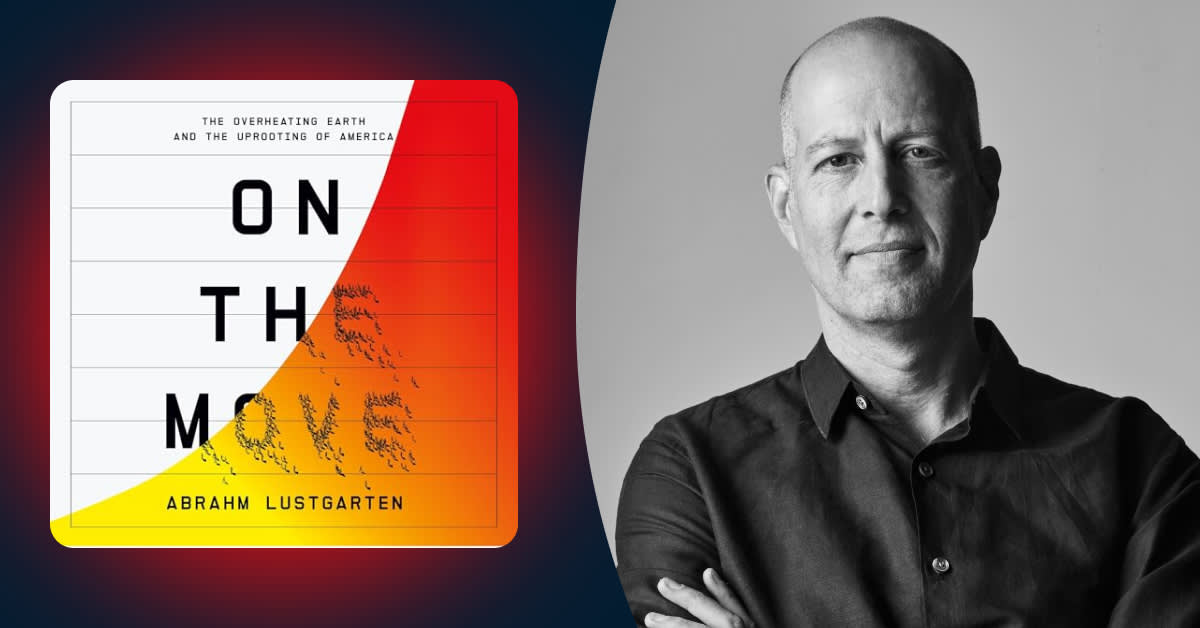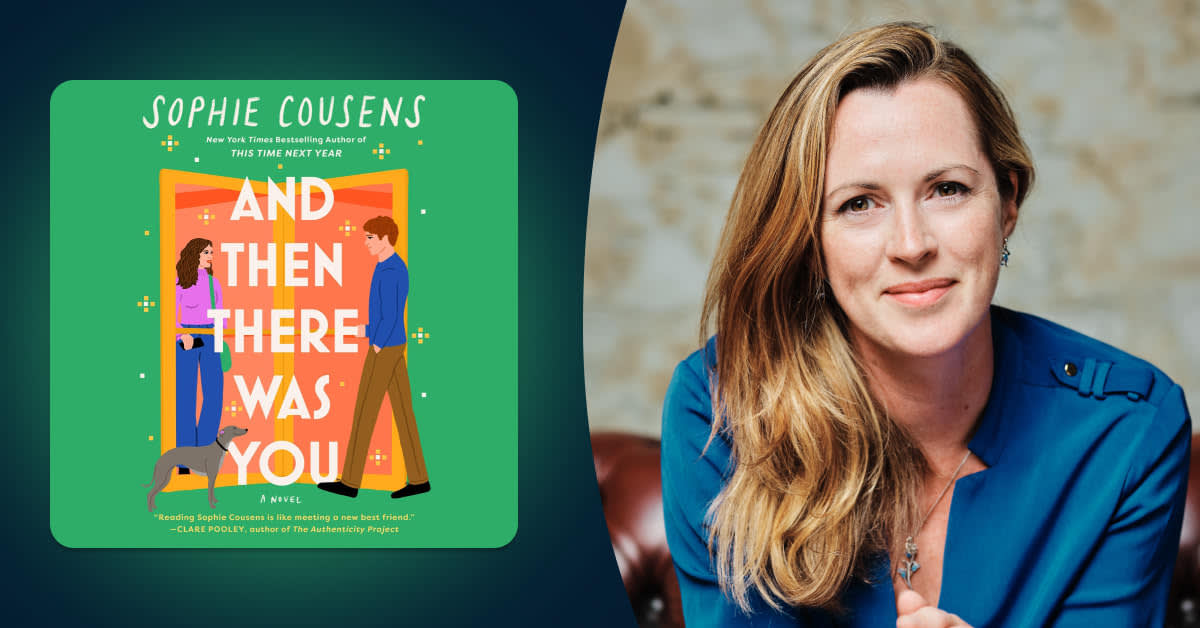Climate change means a lot more than a change in the weather. That much should be obvious by now. It’s not only going to scramble how people live but where they live. As much as 20 percent of the Earth’s land may become uninhabitable by 2070, which means that as much as one-third of the global population may have to go in search of more hospitable environments—and that search will most likely take them northward to cooler climes.
Plants and animals are already on the move in that direction. The human animal, though, is a different beast altogether, with a politics and culture and infrastructure that’s not always conducive to rational planning. But it’s clear from Abrahm Lustgarten’s new book, On the Move: The Overheating Earth and the Uprooting of America, that we are stuttering our way to a new world one way or another—and sooner than we think.
A climate journalist with ProPublica and a regular contributor to outlets including The New York Times Magazine and Frontline, Lustgarten has made a career producing deep investigative work that has become foundational to the public's understanding of environmental issues such as the Deepwater Horizon spill, water scarcity in the western US, and fracking. That he has turned his considerable talents toward climate migration means that it’s really time for all of us to listen up. “In the future, change is going to be constant,” he tells us. “The book shows how embracing it—and planning for it—might make the difference between building a stronger nation and culture or ceding to a weaker one.”
Phoebe Neidl: Listening to this book, I was struck by the takeaway that within this century we will almost certainly see the biggest human migration in our country’s history—anywhere from 13 million to 162 million Americans displaced—which will have enormous political, economic, and cultural consequences. But very few people seem fully aware of it or are planning for it. People are still moving to high-risk climate areas in droves. So, in light of that, how do you hope people use this book? Do you hope it impacts their decisions about how they live and where they live?
Abrahm Lustgarten: I believe that Americans will ultimately respond to environmental change when it shows up as economic change—and that change is beginning to be visible now. We are talking about a slow-moving change that will accelerate and unfold over decades, but which is just beginning, so it’s not surprising that some trends still move in the opposite direction. This book captures the subtle moment that the status quo begins to shift in the United States—the moment, I believe, that the direction of the nation’s economy and population begin to shift. And it describes the signs, so that you can identify them.
From the research I’ve done and the data I’ve considered, I believe every one of us will be impacted and will face challenging decisions about how to steer our lives into the future. My hope is that this book shines a spotlight on those changes, in our economies and in our security so that we can first recognize them for what they are. For those who want it, the book can also offer advice on what to do next, and it can empower those who read it both by putting the change in perspective and by pointing to the good that might also come from it. This book is an investment guide. It’s a policy guide. And it’s a lesson in how the two are profoundly intertwined. There will be winners. Who wins depends on who plans, who plays. The book is a guide for how to play best.
Large portions of the South and Southwest and the coasts are expected to become increasingly uninhabitable because of heat, drought, wildfire, sea-level rise, etc., and you say, “The United States is unlikely to have the financial resources to defend and prop up every place at once. Some places will inevitably have to be sacrificed.” In what ways might the structural inequities built into so many systems in our country make this already dire prediction worse?
We are already seeing rural communities and small cities shrink, as more people move toward the largest urban areas, and in part that is a reflection of the resources and economic support that is available in those cities and the willingness of government to invest in protecting those places. Warming in this country might not be disastrous for everyone—as the book lays out—but we can expect its effects to put incredible pressure on society and industry and agriculture, testing for weak spots and demanding the best of our systems and infrastructure and government. Historical and structural inequities are some of this country’s greatest weak spots, and the physical, economic, and health changes that are coming will continue to affect the underserved, and Black and Brown communities in the US especially, the worst. The solution is to shore up those communities now. One of the book’s central messages is that strengthening the weakest parts of American society will make the rest of society more secure and more prosperous, and that the urgency of climate change also offers a fresh opportunity and incentive to address those long-standing failures.
Is there anything from past migrations, like the Dust Bowl migration or the Great Migration northward of Black Americans in the first half of the 20th century, that can be instructive for how communities deal with this one?
Absolutely. As this book shows, historical migrations in the US have been revitalizing and culturally transformative, especially for the places that grow as a result of that migration. Central California’s vibrant farming communities and cities like Bakersfield and Salinas would not be the prosperous places they are today if they had not found ways to fold the millions of displaced people fleeing the Great Plains into their communities and labor forces, even though that change was sometimes painful. The Great Migration of Blacks out of the South over the last century brought cities like Detroit into its heyday and led to a transformation of arts and music and sports across the nation. Detroit, for example, didn’t stand idly by. Its employers recruited new workers and their families throughout the middle of the 20th century, built affordable homes for them to live in and transit to move them, and then benefited, lifting up whole industries and building the spine of America’s industrial economy with their labor. In the future, change is going to be constant. The book shows how embracing it—and planning for it—might make the difference between building a stronger nation and culture or ceding to a weaker one.
Modeling global warming itself and the chemical changes in the atmosphere caused by fossil fuel emissions seems more straightforward than predicting the human response to those changes. There are a lot of factors that go into decisions about where and when to move, and those decisions are often as much emotional as logical. How does this complicate the science of predicting migrations?
Yes, predicting migration is impossibly complex, and this book explores in great detail why scientists and authors alike should exercise caution about doing so, and avoid the danger of false precision. We do not know how many people will move and precisely where they will go, and we should not believe anybody who says otherwise.
But there is also very good data and scientific understanding of conditions that have been closely associated with displacement and migration in decades past, and good modeling about how those same conditions are changing in the future in the US and around the world. And that science can inform a general direction and a general sense of the scale of migration and population change that we are likely to see. That is what this book is about. It represents inside access to the very best of that science and was informed by the world’s leading researchers. It uses their work to lay out what I believe is the most detailed and informed scientific and sociological case for future migration trends without overstating what models can predict.
You’ve reported extensively on climate migration globally, but you wrote that it wasn’t until 2020 that it really hit home for you how soon the US—including your own family—could be affected by the demographic upheaval. Where are you these days on your own decision to possibly migrate away from wildfire-prone Northern California?
Not a day goes by that I do not dwell, personally, on these very unresolved questions. But as I share in the book, I have not concluded—yet—that I need to move. While a part of this book is about the science, another part is about the human dilemma, and the painful reckoning that goes along with deciding how and where to live in the future. That’s the universal part of this story—the part that every single American is going to face, regardless of their politics and regardless of whether they think they might move or know they never will. My hope is that therein lies its value—that it can help all of us make sense of what we see changing around us, not by preaching what people should do but by naming that change for what it is and what it means, and empowering each of us to decide for ourselves.
Author photo by Seth Smoot.





